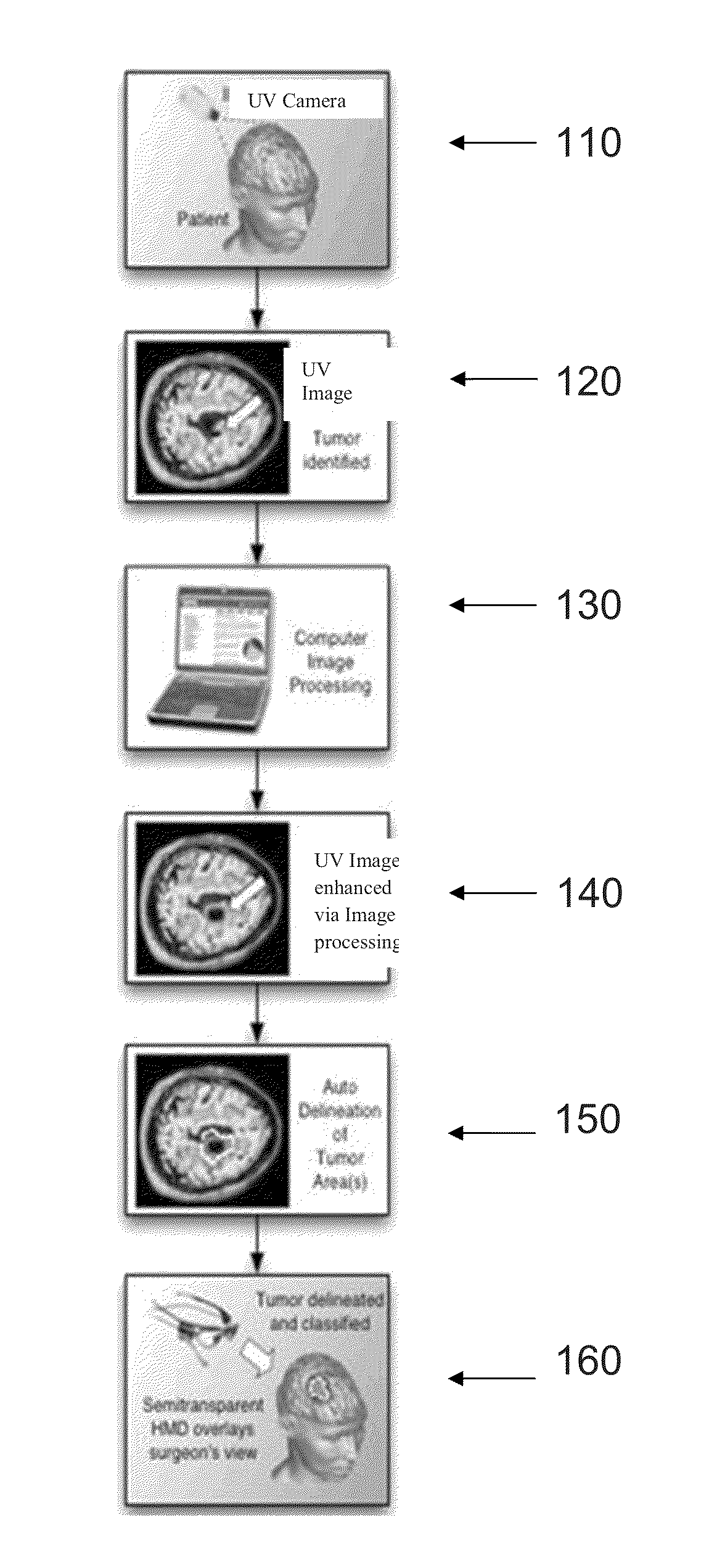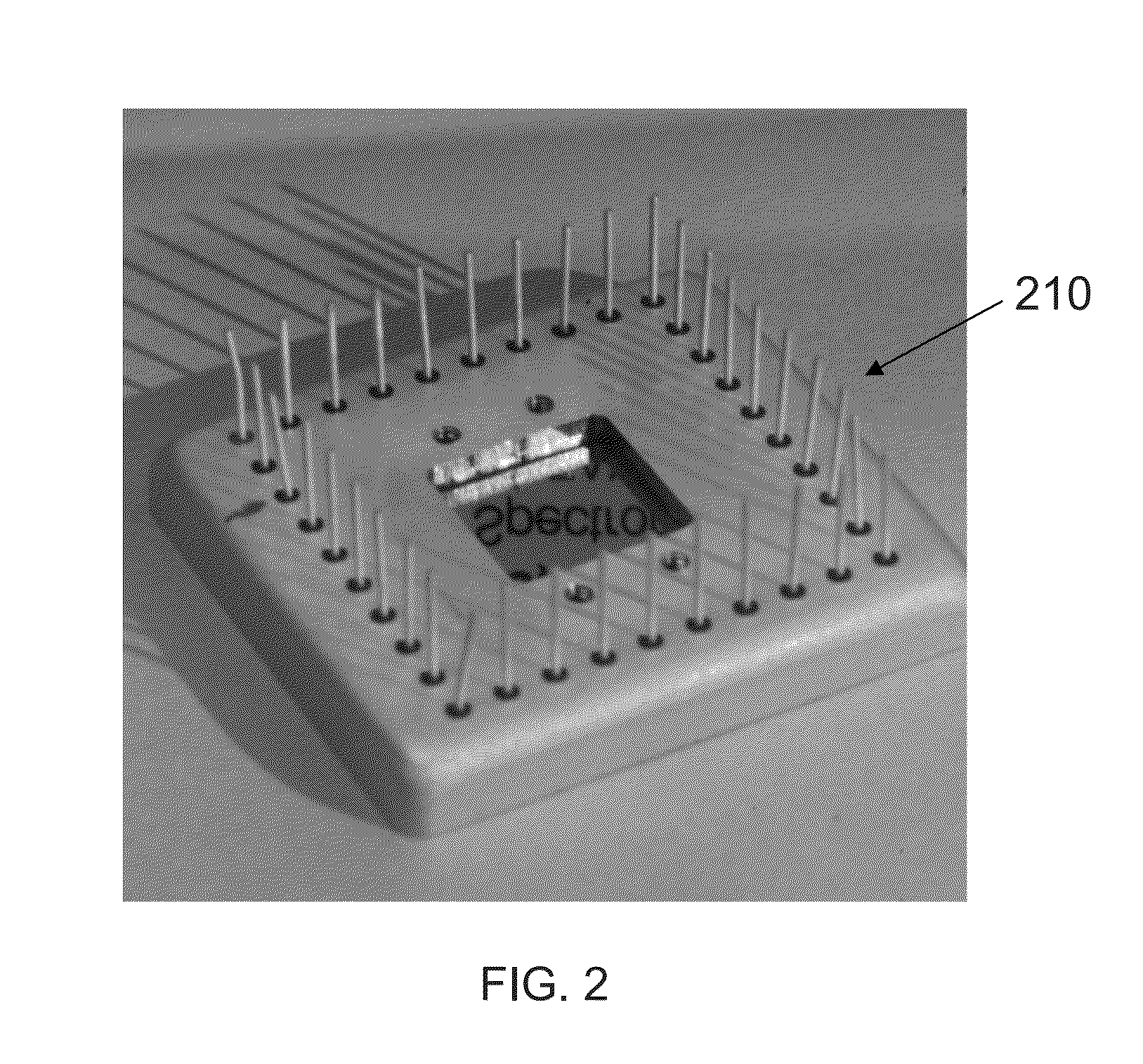UV imaging for intraoperative tumor delineation
a tumor and intraoperative technology, applied in the field of cameras, can solve the problems of long time for tissue acquisition data, limited ultrasound, and inability to use pet scans intraoperatively
- Summary
- Abstract
- Description
- Claims
- Application Information
AI Technical Summary
Benefits of technology
Problems solved by technology
Method used
Image
Examples
Embodiment Construction
[0051]Ultraviolet imaging (UVI) of brain tissue is expected to be a useful tool for intraoperative delineation of tumor resection margins. One of the significant variables affecting the survival and quality of life of patients with gliomas is the completeness of tumor resection. Although recent advances in neuroimaging have opened a new window of opportunity for neurosurgeons to obtain more extensive information regarding the location, invasiveness and metabolic properties of brain tumors, current techniques still cannot provide real-time intraoperative feedback about the completeness of the resection.
[0052]Intraoperative use of a UV camera according to principles of the invention is expected to provide a tool for neurosurgeons to achieve 100% tumor resection. Previous experimental studies have resulted in the development of similar techniques involving UV observations with other instruments that allow for optical imaging of human skin cancer, as described in the Rehua paper cited h...
PUM
 Login to View More
Login to View More Abstract
Description
Claims
Application Information
 Login to View More
Login to View More - R&D
- Intellectual Property
- Life Sciences
- Materials
- Tech Scout
- Unparalleled Data Quality
- Higher Quality Content
- 60% Fewer Hallucinations
Browse by: Latest US Patents, China's latest patents, Technical Efficacy Thesaurus, Application Domain, Technology Topic, Popular Technical Reports.
© 2025 PatSnap. All rights reserved.Legal|Privacy policy|Modern Slavery Act Transparency Statement|Sitemap|About US| Contact US: help@patsnap.com



